First Aid Treatment for Bleeding
UPDATE FROM SFHealth
DAY 6

Welcome aboard Steem-jetters ,we the Steemjet health department would like to welcome on board all
Introduction
First Aid
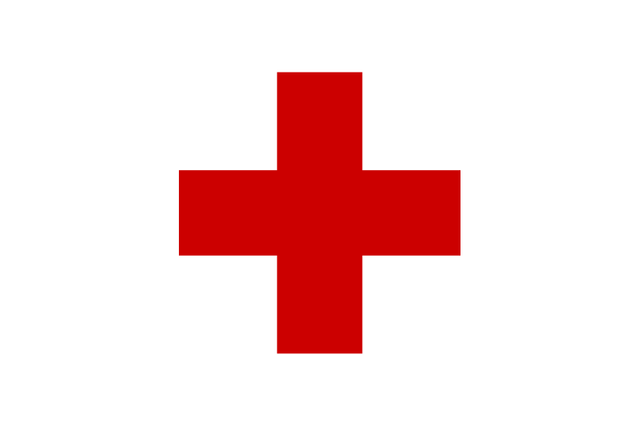
The universal first aid symbol
First aid: This is the immediate assistance given to any person suffering a sudden illness or injury. First Aid is provided to preserve life, prevent the condition from worsening, and also to promote quick recovery. This also include initial intervention in a serious condition prior to professional medical help being available.
The Aim of First Aid
The key aims of first aid can be summarized in four key points, sometimes known as 'the three P's':-
- Preserve life: The overriding aim of all medical care which includes first aid, is to save lives and minimize the threat of death.
- Prevent further harm: Prevent further harm also sometimes called prevent the condition from worsening, or danger of further injury, this covers both external factors, such as moving a patient away from any cause of harm, and applying first aid techniques to prevent worsening of the condition, such as applying pressure to stop a bleed becoming dangerous.
- Promote quick recovery: First aid also involves trying to start the recovery process from the illness or injury, and in some cases might involve completing a treatment, such as in the case of applying a plaster to a small wound.
first aid help to stop the unwanted injuries to be a big cause by providing the medical aid for instance the bandage, some kind of medicines , liquids to stop the clotting of blood , tubes for burns and deep cut to stop the blood coming out of the nerve.
Bleeding
Also called: Hematoma, Hemorrhage
Definition & Overview
Bleeding is defined as the loss of blood. The organs and blood vessels contain blood. If any of these is damaged, blood can flow freely inside or outside the body. If blood flows inside the body, it’s referred to as internal bleeding. If it flows through a break in the skin or a natural body opening, such as the vagina, rectum, mouth, nose, or ears, it’s called external bleeding.
Internal and external bleeding can be caused by a wide variety of factors, such as diseases and injuries. Bleeding can occur anywhere within the body. However, the body has its own sophisticated method of preventing too much loss of blood called hemostasis. When the body detects blood flowing from a ruptured blood vessel, it coagulates (clots) the blood to block the lesion and prevent more from flowing through. The healing process then follows.
However, if the wound is severe, there won’t be enough time for blood clots to form. If the body loses too much blood, organs will begin to fail and death will naturally follow.
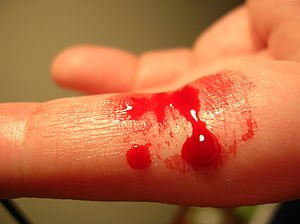
Image source
Minor bleeding episodes are common, easy to treat, and have no long-term consequence. Major bleeding can be very dangerous. Significant bleeding can occur in many situations, even underwater or in the wilderness. Accidental cuts, lacerations, or puncture wounds from sharp objects could cause extensive bleeding. Extensive bleeding can cause a drop in blood pressure and decreased organ blood flow, which could lead to shock. Always check a person who is bleeding for other injuries such as a significant head injury, fractures, or dislocations.
Causes of Bleeding
Bleeding arises due to either traumatic injury, underlying medical condition, or a combination.
Injuries and diseases are the primary causes of bleeding. Injuries to any part of the body may cause a blood vessel to rupture, even without the skin being pierced. A good example is a bruise caused by a heavy blow. A bruise is initially red in color due to the collection of blood released from ruptured capillaries.
Bleeding Symptoms
Bleeding can lead to the following symptoms:
- Pale, cool, clammy skin
- Fast heart rate
Low blood pressure - Light-headedness
- Unconsciousness
- Death within seconds to minutes (in severe cases)
First Aid Treatment for Bleeding
External bleeding
1. Stop Bleeding
a. Apply direct pressure on the cut or wound with a clean cloth, tissue, or piece of gauze until bleeding stops.
If blood soaks through the material, don’t remove it. Put more cloth or gauze on top of it and continue to apply pressure.
b. If the wound is on the arm or leg, raise limb above the heart, if possible, to help slow bleeding..jpeg) image source
image source
c. Wash your hands again after giving first aid and before cleaning and dressing the wound.
d. Do not apply a tourniquet unless the bleeding is severe and not stopped with direct pressure.
2. Clean Cut or Wound
a. Gently clean with soap and warm water. Try to rinse soap out of wound to prevent irritation.
b. Don’t use hydrogen peroxide or iodine, which can damage tissue.
3. Protect the Wound
a. Apply antibiotic cream to reduce risk of infection and cover with a sterile bandage.
b. Change the bandage daily to keep the wound clean and dry.
4. When to Call a Doctor
a. The wound is deep or the edges are jagged or gaping open.
b. The wound is on the person’s face.
c. The wound has dirt or debris that won’t come out.
d. The wound shows signs of infection, such as redness, tenderness, or a thick discharge, or if the person runs a fever.
e. The area around the wound feels numb.
Red streaks form around the wound.
f. The wound is a result of an animal or human bite.
Info source
Nose Bleeding
.jpeg)
Nosebleeds are common. Most often they are a nuisance and not a true medical problem. But they can be both.
###Nosebleed care
Sit upright and lean forward. By remaining upright, you reduce blood pressure in the veins of your nose. This discourages further bleeding. Sitting forward will help you avoid swallowing blood, which can irritate your stomach.
Pinch your nose.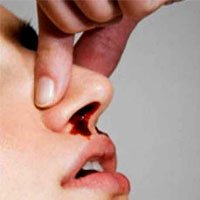 image sourceUse your thumb and index finger to pinch your nostrils shut. Breathe through your mouth. Continue to pinch for 10 to 15 minutes. Pinching sends pressure to the bleeding point on the nasal septum and often stops the flow of blood.If the bleeding continues after 10 to 15 minutes, repeat holding pressure for another 10 to 15 minutes. Avoid peeking at your nose. If the bleeding still continues, seek emergency care.
image sourceUse your thumb and index finger to pinch your nostrils shut. Breathe through your mouth. Continue to pinch for 10 to 15 minutes. Pinching sends pressure to the bleeding point on the nasal septum and often stops the flow of blood.If the bleeding continues after 10 to 15 minutes, repeat holding pressure for another 10 to 15 minutes. Avoid peeking at your nose. If the bleeding still continues, seek emergency care.
To prevent re-bleeding, don't pick or blow your nose and don't bend down for several hours after the bleeding episode. During this time remember to keep your head higher than the level of your heart. You can also gently apply some petroleum jelly to the inside of your nose using a cotton swab or your finger.
If re-bleeding occurs, blow out forcefully to clear your nose of blood clots. Then spray both sides of your nose with a decongestant nasal spray containing oxymetazoline (Afrin). Pinch your nose again as described above and call your doctor.
When to seek emergency care
The bleeding lasts for more than 30 minutes
You feel faint or lightheaded
The nosebleed follows an accident, a fall or an injury to your head, including a punch in the face that may have broken your nose
When to contact your doctor
You experience frequent nosebleeds. You may need a blood vessel cauterized. Cautery is a technique in which the blood vessel is burned with an electric current, silver nitrate or a laser. Your doctor may pack your nose with special gauze or an inflatable latex balloon to put pressure on the blood vessel and stop the bleeding.
First Aid Do’s
- Help the person to remain calm. If the cut is large or bleeding heavily, have them lie down. If the wound is on an arm or leg, raise the limb above the heart to slow bleeding.
- Remove obvious debris from the wound, such as sticks or grass.
If the cut is small, wash it out with soap and water. - After putting on clean latex gloves, apply firm pressure to the wound with a folded cloth or bandage for about 10 minutes. If blood soaks through, add another cloth or bandage and continue putting pressure on the cut for an additional 10 minutes.
- When bleeding has stopped, tape a clean bandage over the cut.
##First Aid Don’ts - Don’t remove an object if it’s embedded in the body.
- Don’t attempt to clean a large wound.
When first applying the bandage, don’t remove it to look at the wound during this time. It may begin bleeding again.
This post was brought to you by #sfheath
Thank you for you time.
Steemjet medic we Care
Special greetings to
@nathanmars
@dimimp
@lordjames
@deandaniel
@empato365
@mbj
@peterakpan
@vegemitekid
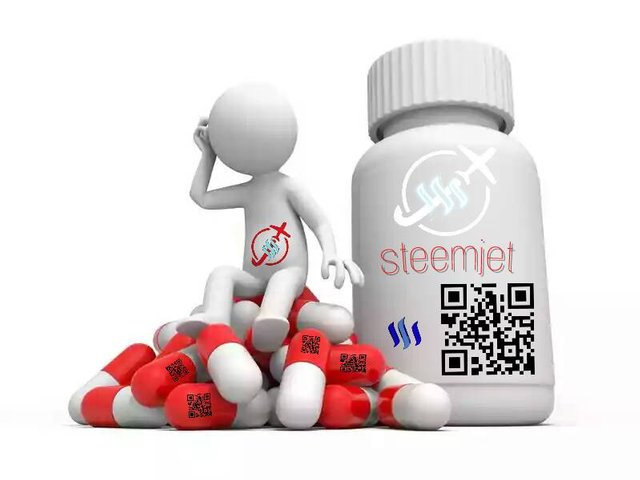

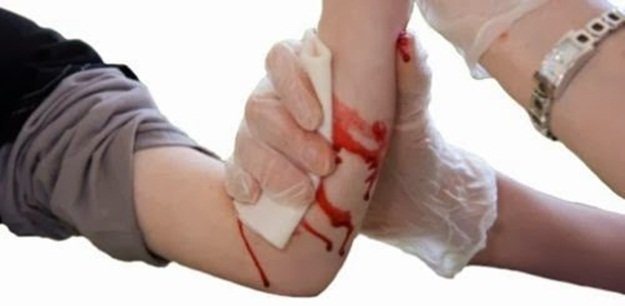
Educative
Just reminded me of the basics...
I have a whole lot to learn from @sfhealth and i guess this is just beginning....
A whole lot
Wow this is very educative. I think the kids needs to learn stuffs like this. Impressive!!
Quite impressive, well done @Sirdeza
Thanks boss
Thank you, this is quite informative post. If i cut my hand is it okay to put the cut hand in my mouth?
No sir. Just use a clean cloth and apply pressure on the cut.
Thank you, these old habits die hard, but thanks
Very informative dear, great work